The Irish Terrier is as flashy and fiery as you would imagine an authentic Irishman to be. Unlike most terriers, these dogs were bred to be all around farm hands. They were skilled in ratting, hunting, and protecting both stock and humans. Today, they make feisty little companions, and many excel at canine sports. Read more to learn about the Irish Terrier.
Description of the Irish Terrier
This breed is in many ways the epitome of a terrier. Their medium build and long legs exude athleticism. The Irish Terrier gives off the impression of a wound spring; their little bodies are perpetually full of energy ready to be used.
These dogs have short, reddish coats. Most have a bit extra around their muzzles and paws, giving them an adorably unkempt look. The wiry outer coat hides the denser inner coat beneath. It’s surprisingly weatherproof and wicks water efficiently.
The Irish Terrier’s devilish eyes and cocked ears give away the breed’s true spunk. This dog is always up for some fun.
Life Expectancy and Size
The Irish Terrier has a very manageable small to medium build. They generally stand 18 inches at the shoulder, and weigh between 25 and 27 pounds.
This breed definitely has the life expectancy of a small breed. It is common for them to live well into their teenage years, with most living between 13 and 15 years. Working with a reputable breeder can increase the likelihood that your Irish Terrier will live to a ripe old age.
Protective Ability
This breed was bred as a watchdog. They are quick to bark at new sights and sounds, and may just as likely scare off a friendly neighbor as a potential intruder.
However, protective instincts vary. These are not huge dogs, and although they may be scrappy, they’re not likely to fight anyone off anytime soon.
Training
Irish Terriers are smart and can apply their knowledge extremely well. In fact, it can be amazing how fast they can learn exciting new tricks.
However, they are also typical terriers. This breed is independent and can be strong willed. These characteristics are in constant battle with their innate desire to please. Unfortunately, this can make the Irish Terrier difficult to train. However, it is by no means impossible.
Terriers are sensitive and do not respond well to harshness. In fact, they may even be quick to snap at physical corrections. Instead, positive, rewards-based training works best. Short, sweet sessions can help keep these dogs interested.
It is also important to maintain boundaries with the Irish Terrier. A calm, collected owner can show his dominance without resorting to negative reinforcement. Consistency can be surprisingly effective.
Energy Level
This breed is high energy. Often times, it seems never ending. Many Irish Terriers will let off as much steam as you will allow.
For many active families, this can be very fun. These dogs integrate well into daily life, and love joining the family for outdoors play sessions. Older children especially may find their jovial personalities amusing.
However, these dogs can also become destructive if they do not release enough energy. It is important to prioritize exercise to make this terrier more enjoyable to live with.
What Living with an Irish Terrier is Like
The Irish Terrier may not be the most popular terrier, but they can make extremely fun and energetic housemates.
This breed is especially well suited to active families. They enjoy being part of the action. Their intelligence and wit mean that they are fun dogs to play with. Many find purpose through activities like hunting or sports like agility. Like little jack rabbits, most of these dogs will keep on going until they have to stop.
This breed is perhaps the most brave of all the terriers. While this trait made them exceptional farm hands, it can be a handful for the average family. It is important to secure fences so that these dogs don’t jump or dig their way into harmful situations. Some individuals may chase or challenge strange animals, which can also put these scrappy dogs in unnecessary danger.
The Irish is a low shedding dog that only needs the occasional brushing to remove excess hair. Their long lifespans and relative good health are also big attributes.
Care of the Irish Terrier
This breed is hardy. For families that enjoy their feisty personalities and never ending energy, this breed is actually quite easy to care for.
Environmental Needs
The Irish should do well in most environments. Bred for the harsh Irish climate, with plenty of rain and chilly temperatures, they are up for almost anything. Their hair in particular is effective for rain. As with all dogs, be careful to limit time outside in extreme heat or extreme cold. Otherwise, this dog should enjoy spending plenty of hours outside.
Exercise Needs
Providing the breed with adequate exercise will make these dogs much better housemates. If they do not have enough stimulation, they will find ways to use up their extra energy. Often times, that can mean destructive behaviors like digging and chewing.
The Irish Terrier does best with access to a good size yard. This allows for plenty of playtime with the family in a safe, enclosed space. Playing games like fetch are perfect for this speedy little dog. Of course, doggie sports are another great option. These offer plenty of social time, and channel the breed’s energy in a very constructive manner.
Walks are another good way to keep the Irish happy. Especially for households without a yard, they are absolutely essential. At least two good walks a day will satisfy this breed’s curiosity and drive.
Shedding and Grooming
These dogs do shed, but not nearly as much as most canine companions. They only lose their softer under coat. This can get stuck under the wiry outer layer. Occasional brushing can help to remove this, and keep it from edging up in the house.
This breed does require periodic clipping. Some breed enthusiasts advocate hand-stripping. This is a time consuming processing that involves pulling out individual pieces of hair. For most family pets, clipping either at home or with a groomer will work just fine.
Ideal Home Environment
The Irish Terrier is a great companion for the active individual or family. They are full of personality, which can make them particularly fun for older children. As with most terriers, they don’t put up well with excessive rough housing, so they may not be great with young children that do not understand how to be gentle yet.
These dogs would fit particularly well into a situation where they can use their bodies and brains. Owners that are interested in sports may find the Irish to be a great companion. Yard space is not required, but definitely recommended for this active breed.
This breed is usually fine with dogs that they know. Some can be dominant or snappy, especially with strange dogs. Socialization lessons beginning in puppyhood can help them to interact more positively.
Health Concerns
Thankfully, this breed is quite healthy. In fact, many live well into their teenage years. This can be an important factor when selecting a family pet.
Some common health problems the Irish Terrier does face are quite mild. Hyperkeratosis can cause dry, cracked feet. This is only present in some lines, however. Bladder stones can also be an issue for some individuals. Working with a reputable breeder can help to avoid some of these issues.
Behavior Problems
These dogs are brash and bold. Sometimes, this can get them into trouble. Poorly socialized dogs may challenge others that are twice their size. Digging and jumping, often in pursuit of prey, can also cause problems.
Managing these problems is usually as simple as keeping the Irish Terrier engaged. This will decrease their excess energy at inopportune times. It is helpful to remember that this breed’s fiery soul is what makes these dogs special. They may require some extra effort, but there will never be a dull moment with an Irish Terrier!

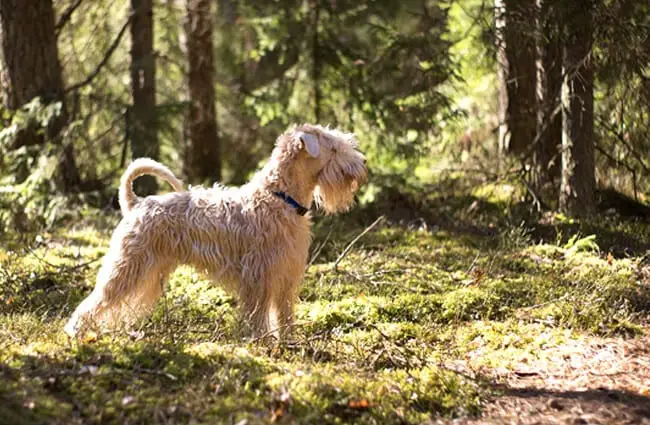

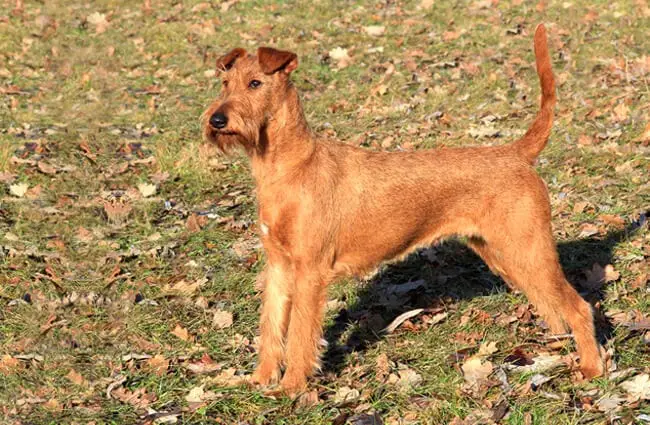
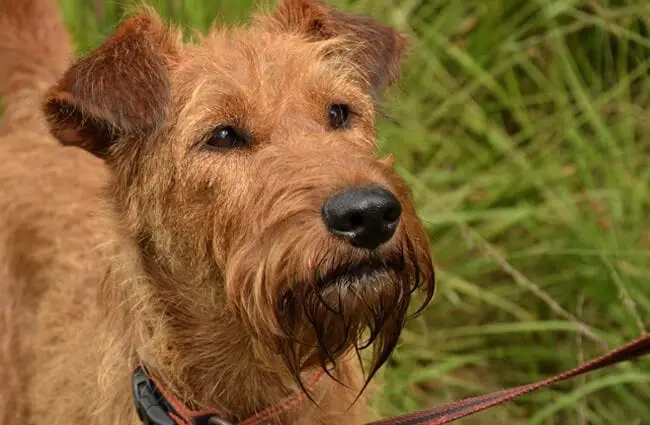
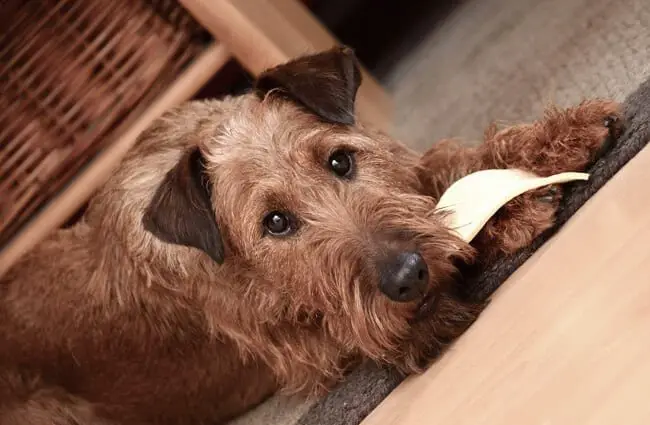
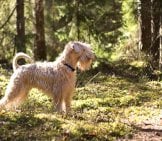
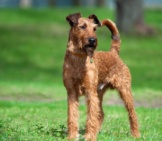

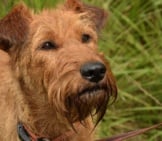














![Red Angus Closeup of a beautiful Red Angus cowPhoto by: U.S. Department of Agriculture [pubic domain]https://creativecommons.org/licenses/by/2.0/](https://animals.net/wp-content/uploads/2020/03/Red-Angus-4-100x75.jpg)

